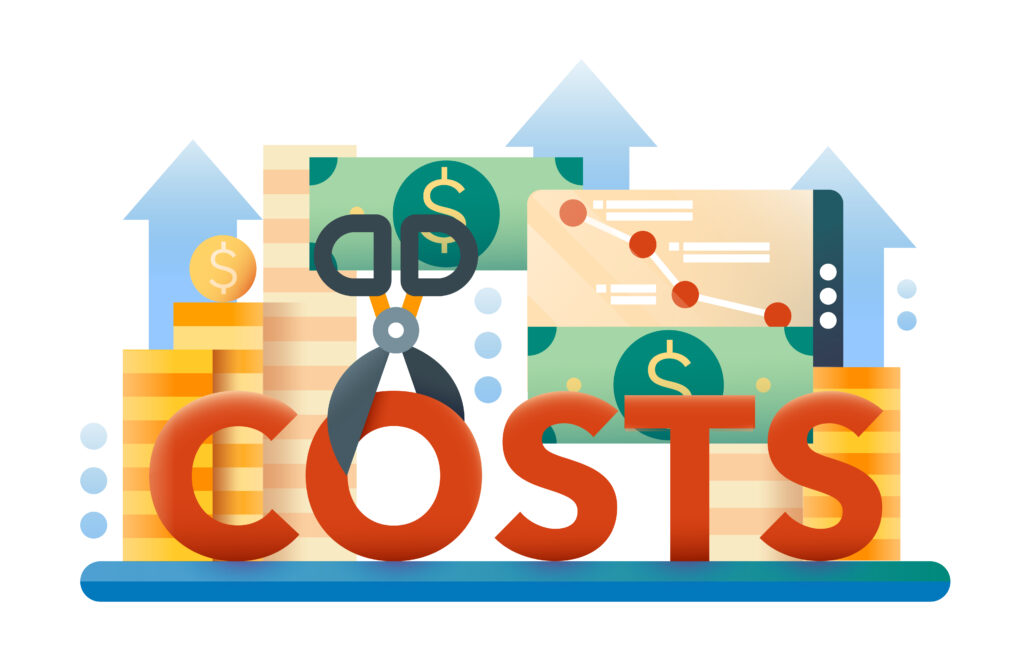
Feeling the economic squeeze from the pandemic? The Consumer Price Index in August recorded a 5.3 percent increase from the previous year. This inflation affects everything from your movie nights to basic necessities such as food and housing. Recently, replacing my broken phone proved more expensive than anticipated, highlighting the ongoing impact on everyday expenses.
Why Are Prices Soaring?
Shipping container shortages have sparked bidding wars, exacerbating delays in transporting goods from docks to stores. Krishnakumar Davey, PhD, from IRI, highlights numerous bottlenecks in the supply chain. Efforts to mitigate these include around-the-clock operations at major ports. Despite efforts to reduce costs, the need for immediate satisfaction often results in higher prices.
Challenges such as raw material shortages and climate change further strain supplies. Consumer hoarding exacerbates these issues, with many stocking up in anticipation of further price hikes. This behavior is influenced by concerns over frequent exposure to crowded areas. Here’s an analysis of how these factors lead to higher spending in various sectors, including unexpected splurges on items like wedding attire or luxury furniture.
Technology and Electronics
The tech industry is grappling with a microchip shortfall. Production stoppages during the pandemic, along with natural disasters, have severely disrupted supply chains. Consequently, some television models are now nearly 30 percent pricier than last year. Experts anticipate this shortage will continue into early 2023, impacting prices for popular electronics like the latest smartphones.
Automotive Industry
Vehicle manufacturers are also struggling with microchip shortages. Major companies like Ford and General Motors have had to reduce production, driving up the cost of new and used vehicles by up to 31.9 percent. These increases also affect related purchases, as seen when I faced unexpected expenses buying formal wear for a wedding.
Rental Vehicles
The pandemic led rental companies to reduce their fleets, causing rental prices to spike by 73.5 percent. The scarcity of rideshare drivers further complicates mobility, adding to the costs of services like Uber and Lyft. This situation is analogous to facing unexpected charges for special delivery services when purchasing large items such as furniture.
Fuel Costs
Fuel prices have surged by 42.7 percent, driven by reduced oil production and subsequent demand spikes. Events like Hurricane Ida have exacerbated this trend, similar to how delivery charges can unexpectedly increase the cost of large purchases.
Apparel
Apparel costs have risen, with an increase noted in cotton prices and wages. The price for specific items like dresses and suits has seen a significant bump. Reflecting on personal experiences, the cost of new outfits for special events often surpasses initial estimates.
Leisure and Hobbies
The toy and game sectors are feeling the pinch with expected price rises of 5 to 10 percent due to shipping delays. Similarly, popular video games and gaming consoles are seeing price increases due to the same supply issues. Such unexpected expenses are comparable to the high costs of acquiring new gadgets like premium smartphones.
Seasonal Decorations
Both real and artificial Christmas trees are becoming pricier due to environmental and logistical challenges, which could increase prices by up to 25 percent. The added cost of decorations like ornaments is also climbing, mirroring the unforeseen expenses encountered when purchasing home decor items.
Real Estate
Housing prices have seen an 18.1 percent increase, influenced by shortages of building materials and labor. Although lumber prices have declined, other factors continue to drive up costs, similar to the unexpected expenses I faced during recent home renovations.
Food and Dining
The cost of groceries and dining out continues to rise, with meats and prepared meals seeing the most significant hikes. These increases are often due to factors like supply chain disruptions and increased operational costs in the food industry.
Healthcare and Medical Needs
The healthcare sector is facing increased costs for essential supplies and equipment, compounded by the microchip shortage. This rise in prices is paralleled by the additional expenses incurred during significant purchases, like those seen with high-end electronics.
Literature and Publishing
The publishing industry is struggling with a shortage of physical books, exacerbated by labor issues and logistical setbacks. This has led to a notable increase in book prices, similar to unexpected costs associated with purchasing specialized furniture.
| Category | Price Increase (%) |
|---|---|
| Electronics | 30% |
| Cars | 7.6% (new), 31.9% (used) |
| Rental Cars | 73.5% |
| Gas | 42.7% |
| Clothing | 4.2% – 11.9% |
| Food at Home | 3% – 25% |
| Food Away from Home | 4.7% – 6.9% |
Adjusting to a New Reality
Despite attempts to stabilize markets and prices, expect these challenges to continue into the foreseeable future. The benefits of online shopping and restaurant deliveries will likely persist, but we are not returning to pre-pandemic norms. Instead, we adapt to a new status quo. Among these increased costs, those related to microchip-dependent products like electronics and automobiles are likely to remain among the most expensive, echoing the sentiments of many who have faced higher-than-expected expenses on tech gadgets, delaying other essential purchases.